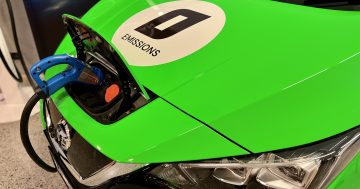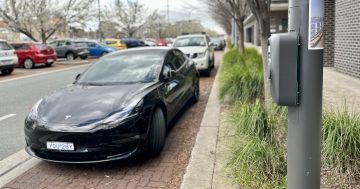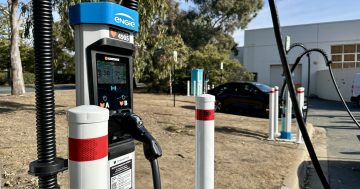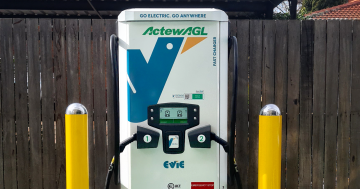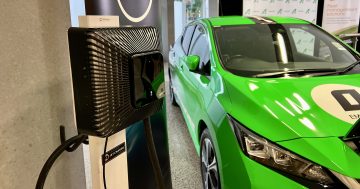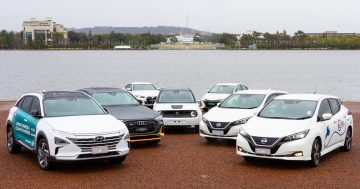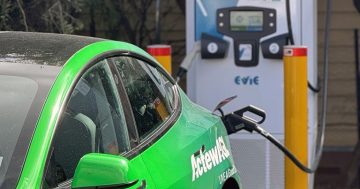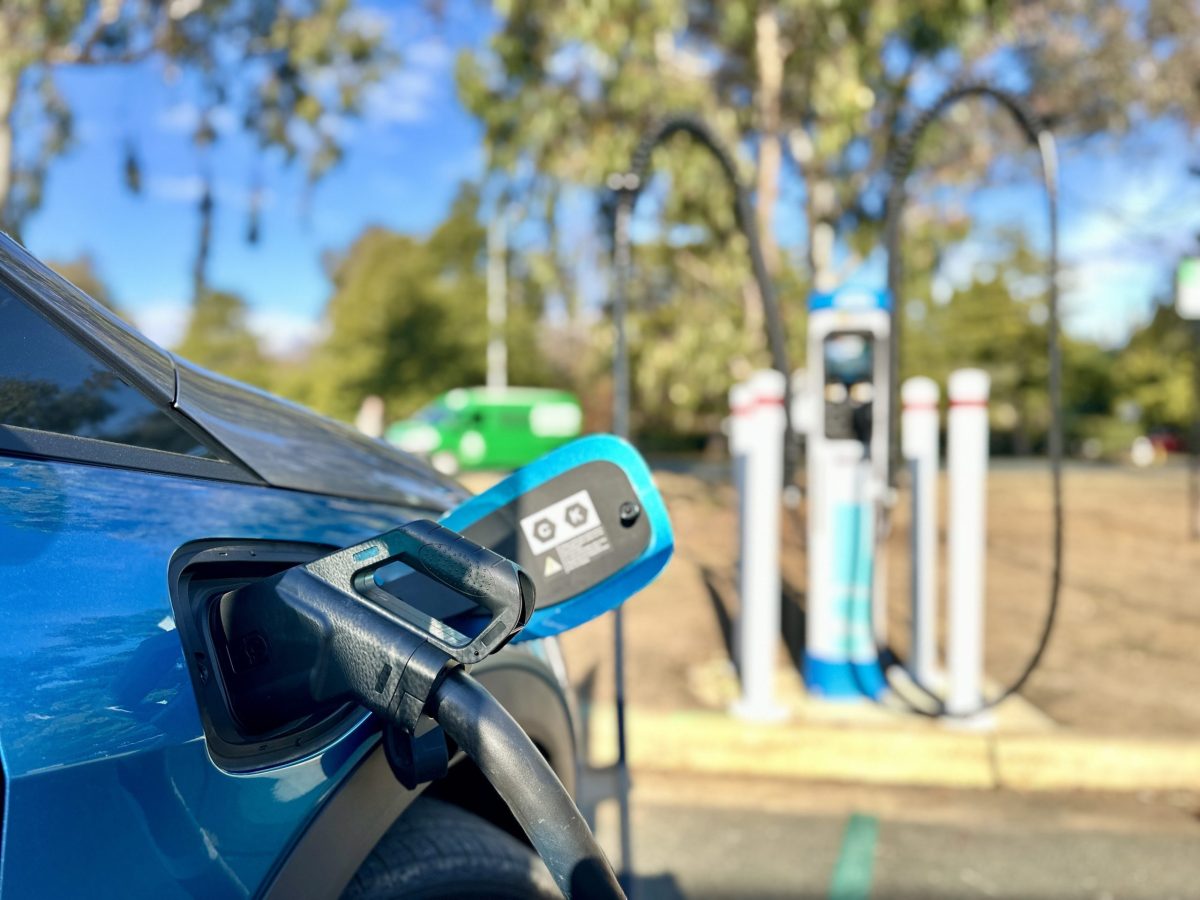
EV charger launch, ANU. Photo: James Coleman.
The ACT Government is pouring another round of funding into expanding the number of EV chargers across the city after being “a little behind for a while there”, according to ACT Minister for Water, Energy and Emissions Reduction Shane Rattenbury.
ActewAGL, BP, ENGIE and Evie will receive $626,275 to install another 39 chargers over the next 12 months “in places they are needed most, near tourist hotspots, shopping centres and high-residential areas”.
Previous EV grants, including the first round of funding, have delivered 39 public EV chargers (with 65 charging bays) across the ACT, with a further 21 chargers expected by the end of the year.
There are currently 156 public EV charging stations operating in the ACT.
This second round of funding will complete the target of 180 by 2025 and add three more chargers to Belconnen, four to North Canberra, eight to Civic, three to Weston Creek and Molonglo, 18 to South Canberra and three to Woden Valley.
Separately, the Gungahlin Marketplace has recently installed three DC fast chargers in its main car park.
Mr Rattenbury announced the rollout at the official opening of a bank of six new ENGIE chargers at the ANU campus, a first for the inner north.
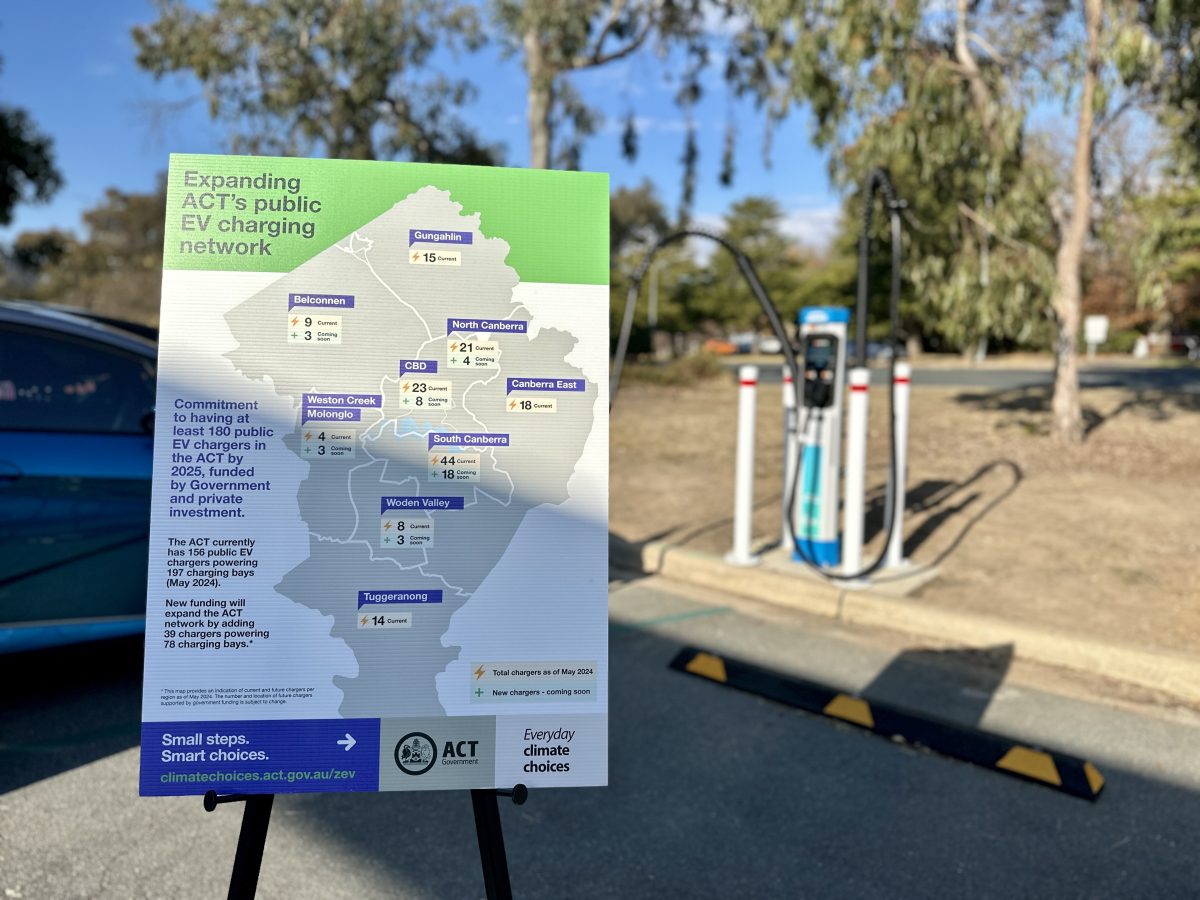
The expanding EV charger network. Photo: James Coleman.
The six spaces are located in a small car park off Repertory Lane, and open to not only ANU staff and students, but also members of the public. Up to this point, the ANU only had one on the other side of the campus near the Ian Ross Building.
Mr Rattenbury said the locations of the new chargers across the ACT have been chosen largely to aid apartment dwellers who, up to now, have been left out of the EV revolution.
“We understand that people who live in apartments and townhouses have extra barriers to installing home chargers, which is why we are prioritising putting public chargers in areas of high-density housing.”
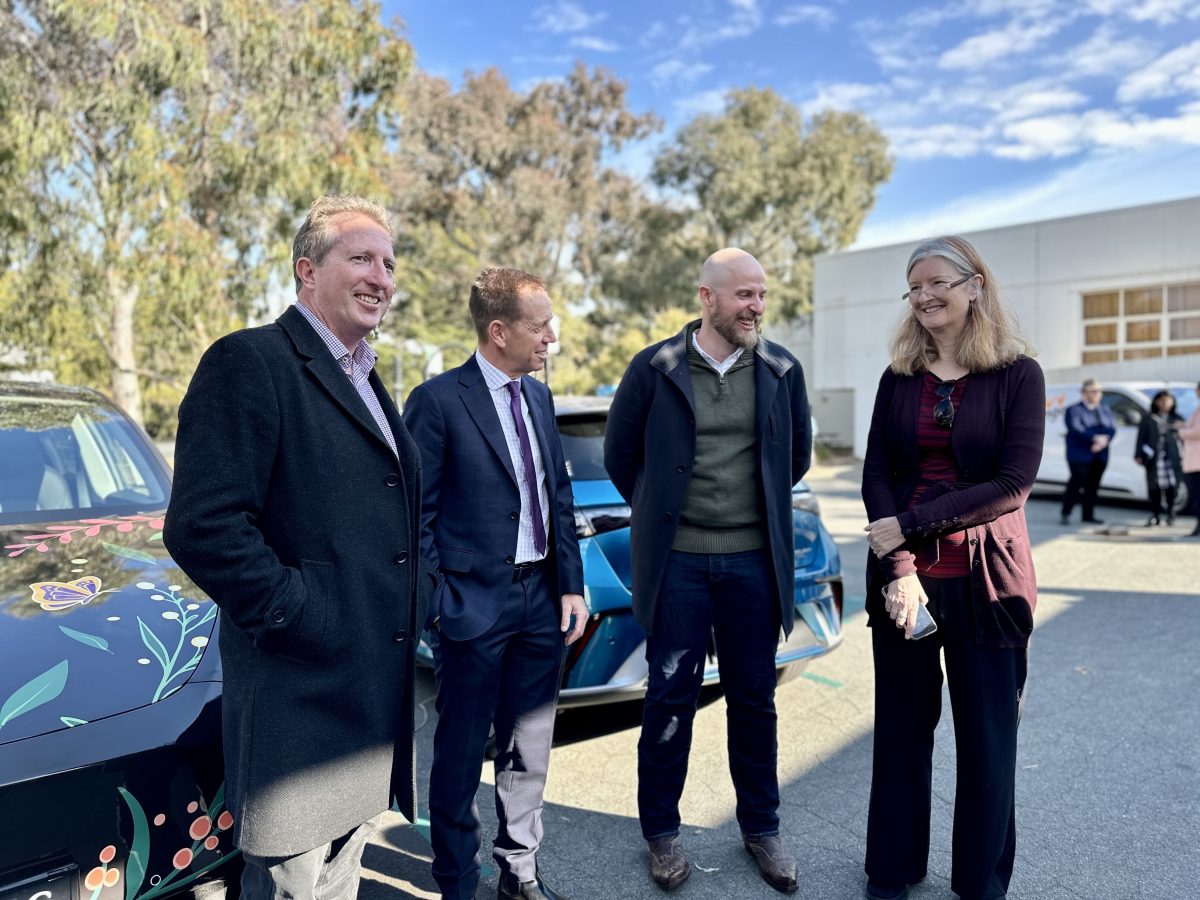
ENGIE ANZ Director of Green Mobility EV Greg Schumann, ACT Minister for Water, Energy and Emissions Reduction Shane Rattenbury, ANU Deputy Vice-Chancellor (Research and Innovation) Professor Lachlan Blackhall, and Australian Electric Vehicle Association (AEVA) vice-president Jude Burger. Photo: James Coleman.
He said it was important the community has confidence that “they’ll be able to charge when they need it, where they need it, and not find themselves caught short”.
ENGIE ANZ Director of Green Mobility Greg Schumann added EV owners should be able to recharge while going about life.
“That might be at home, it might be at university, it might be at a shopping centre, maybe at a hospital or medical facility – that’s what we see the future for our network being.”
ENGIE manages more than 200 charging bays across Australia, including another bank of six at the Royal Australian Mint in Deakin, which – since it opened in September 2023 – has become “one of the busiest in Australia”.
As for technology allowing EVs to give back to the grid, that’s a few years away yet for the ACT.
South Australia is the only jurisdiction in Australia to approve what’s called Vehicle-to-Grid (V2G) charging. Last week, the Mitsubishi Outlander PHEV was added to a list of only two cars capable of V2G charging, the other being the Nissan Leaf.
Only one inverter unit is approved under Australian standards, the Wallbox Quasar 1, which retails for around $10,000.
Over two years, the ACT Government ran a ‘Realising Electric Vehicles to Grid Services (REVS)’ trial in partnership with a number of stakeholders, including ActewAGL, the ANU, JetCharge and Nissan, to assess how it could work here.
Since this concluded in March 2023, an ActewAGL spokesperson told Region there has “been a lot of interest”, but that “there are still multiple pieces of the puzzle that need to come together … and V2G is a few years away from being available in residential developments”.
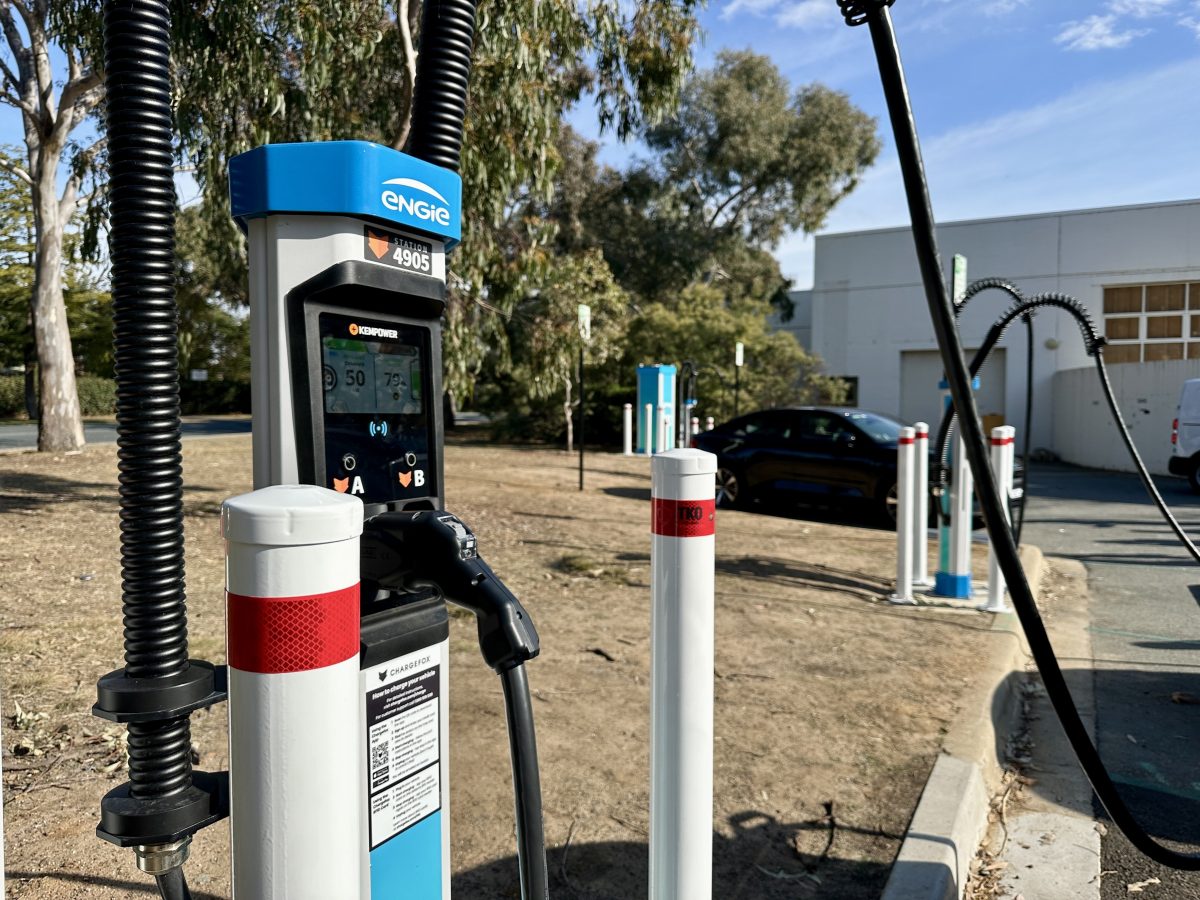
Vehicle-to-grid (V2G) chargers are a few years away yet, according to ActewAGL. Photo: James Coleman.
Electricity network operators are also waiting on the Australian Government to update design standards and allow more inverter units like the Wallbox to enter the market.
“This is expected to be finalised this year, after which it is likely that more electricity network operators will allow the connection of V2G/V2H equipment that meets the Australian standard to their network,” the spokesperson said.
A map of public charging stations in the ACT and across Australia is available at Plug Share.












